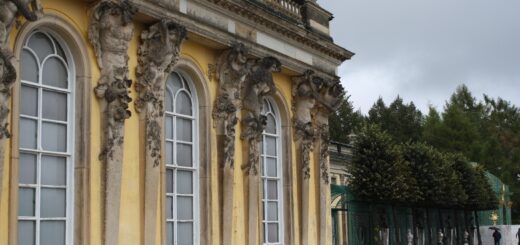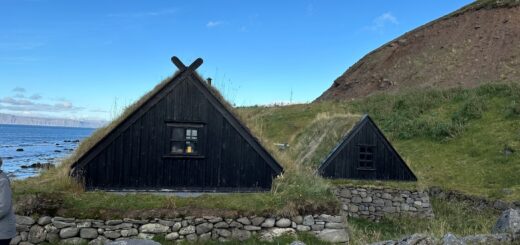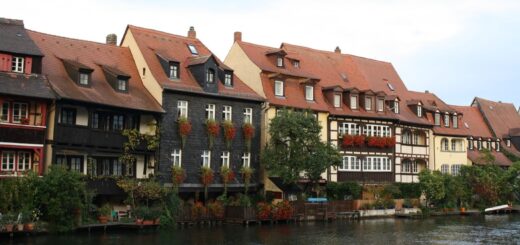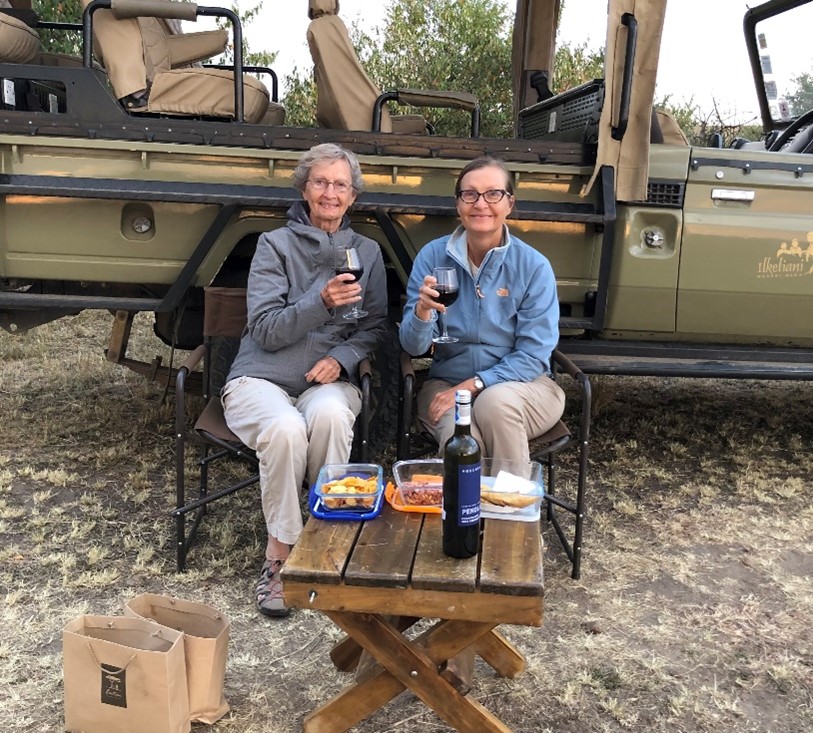Qaqortoq
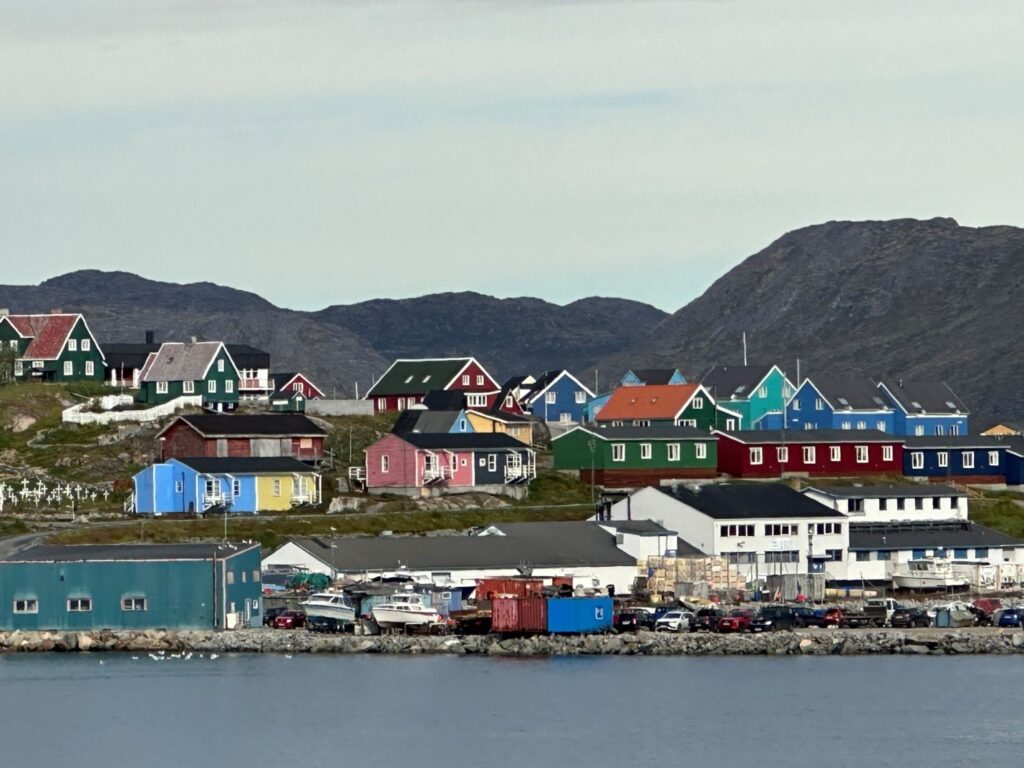
Travel Advice for Seniors: Qaqortoq
Part of the allure of signing up for an ocean cruise from New York City to Iceland was the chance to visit Greenland in route to Iceland. Not knowing what to expect at all was part of the fun!
We visited in September, so the waterways were still open even though we spotted several icebergs (!). The big freeze begins late October and goes until May with temps in January as low as -87 Fahrenheit in the northern part of the country. BRRR! Thankfully, it was chilly, but not freezing cold when we visited.
Greenland is the world’s largest island and is well known for its vast tundra and immense glaciers. Interestingly, Greenland is part of Denmark as of 1953, though it is primarily home-rule for most domestic issues.
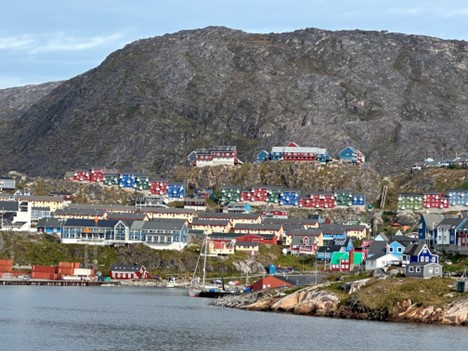
Our first stop was Qaqortoq, (pronounced Ka Kor Toc). It was a colorful city of about 3000 people. Our walking tour involved visiting several 18th-century colonial buildings and a landmark fountain in the town center. The buildings were nicely restored and the people that lived there were giving tours and information at several of the buildings, which was very nice.
Qaqortoq was first settled by the Viking uncle of Erik the Red. The Inuit followed, leaving many artifacts behind. There were then followed by the Danish colonial era.
There is a fish and meat market close to the harbor, but we did not tour it.
The Old Church, or “Annaasisup Oqaluffia,” built in 1832 was of particular interest as the locals had invited a family to perform and talk about traditional music and their family history. There were also some original mid-19th century paintings on the walls that were worth a look. Most of all it was nice to sit somewhere warm and hear some good stories!
There were another group of people that put on a boat show featuring brave men who would turn their kayaks upside down in the water and rotate around.
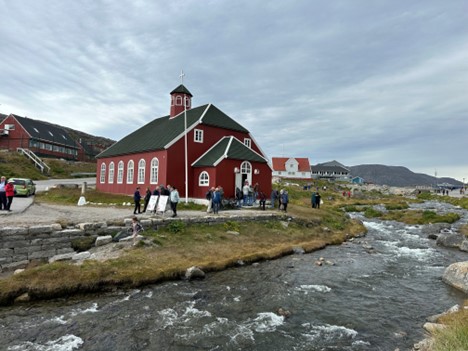
The Qaqortoq Museum gave a history of this interesting settlement and was worth a stop. There were also stone-and-peat houses used by the Inuit people until the 1970s and on a small hill close by the harbor, you can view the town’s 30 “Stone and Man” sculptures, each carved by local and Scandinavian artists.
There were a few tourist shops, but they were a bit pricey. We opted to visit the local grocery store to pick up a few souvenirs, but it was pricey as well since everything is imported. However, we did pick up some candies for the kiddos at home that were reasonably priced. Qaqortoq is not accessible.
Interesting story on the brightly colored homes…apparently in colonial times buildings were color coded so that people would know which is where, for instance hospitals and doctors’ houses were yellow, and tradesmen’s home and churches were red. The custom has carried over to current times, however, it appears to be mostly to relieve the monotony of the landscape during snowy season.
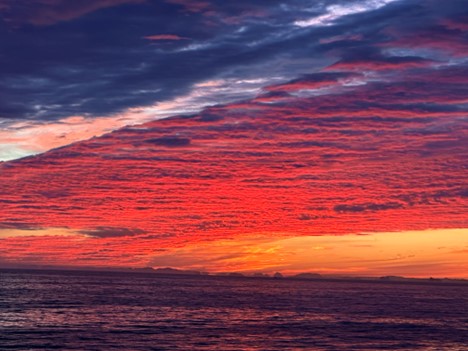
Also, we didn’t see it, but there is a large and well-preserved Viking settlement that is about twelve miles out of town at Hvalsey (not accessible). However, note on this particular cruise there were ample Viking settlements, most original and a few reproductions and while interesting, they were similar.
Where we stayed: On board our ocean cruise boat. The boat had an elevator, but some of the decks are split level with thresholds.
How we got there: Boat from L’Anse Aux Meadows and across the Labrador Sea to Qaqortoq.. This was part of a 15-day ocean cruise tour beginning in New York City and ending in Reykjavik, with stops in Canada, Greenland and Iceland.
General Accessibility Information: See notes above. Greenland is not considered accessible. Call in advance to verify and make specialty arrangements. See our sections on specialty apps and accessible travel for more on accessibility assistance.

